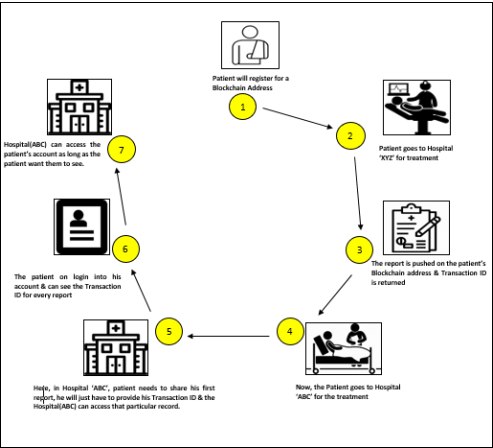Individuals who are covered under employer-sponsored health insurance or private market health insurance in the U.S. (including ACA-compliant plans) are not part of a single-payer system, and their medical insurance is not government-run. In these markets, numerous different, private insurer are accountable for paying members' claims. For the most part, universal protection and a single-payer system go together, due to the fact that a country's federal government is the most likely prospect to administer and pay for a healthcare system covering millions of people.
However, it is very possible to have universal coverage without having a complete single-payer system, and various nations around the world have done so. Some nations run a in which the government supplies fundamental healthcare with secondary protection available for those can manage a higher requirement of care. Two-thirds of Canadians, for example, purchase supplemental personal coverage for oral, vision, and prescription drugs, due to the fact that the government-run strategy doesn't supply those advantages.
This is comparable to Medigap coverage in America, for people covered under Original Medicare. The government provides Original Medicare protection, however it does not have a cap on how high out-of-pocket costs can be. So most Initial Medicare recipients count on some type of additional coveragefrom a company or former company, Medicaid, or privately-purchased Medigap policies.

In a socialized medication system, the federal government not just pays for health care but runs the health centers and uses the medical staff. A nation can adopt a single-payer approach (ie, the government spends for medical care) without a socialized medicine technique. The National Health Service (NHS) in the United Kingdom is an example of a system in which the government spends for services and also owns the healthcare facilities and employs the physicians.
They just bill the federal government for the services they provide, similar to the American Medicare program. The primary barrier to any socialized medicine system is the federal government's ability to effectively money, manage, and upgrade its requirements, devices, and practices to offer https://www.google.com/maps/d/edit?mid=1Wedk1s9d7-mbFisP8bnhEt7Y-yUOwChh&usp=sharing optimal health care. Some professionals have actually recommended that the United States should incrementally reform its existing healthcare system to supply a government-funded safeguard for the sick and the bad (sort of a broadened variation of the ACA's Medicaid growth) while needing those who are more fortunate health-wise and financially to acquire their own policies.
But it is technically possible to construct such a system, which would supply universal protection while likewise having numerous payers. While it is theoretically possible to have a national single-payer system without also having universal health protection, it is extremely unlikely to ever occur since the single-payer in such a system would unquestionably be the federal government.
federal government were to embrace such a system, it would not be politically viable for them to exclude any private citizen from health coverage. Regardless of this, a growing variety of congressional agents have actually required the establishment of "Medicare for All," a proposition popularly endorsed by the supporters of Vermont Senator Bernie Sander in his presidential projects.
The Buzz on Why Single Payer Health Care Is Bad
government would provide coverage to all American residents, there are various approaches that have actually been proposed and they would all include more robust coverage than the current Medicare program provides. These methods have been improperly identified "socialist" by a lot of in the Republican Party, but none of the current Medicare for All proposals would include socialized medication.
Many of them have achieved universal coverage with 100 percent of their population covered by core health benefits. However in seven of the nations (Chile, Estonia, Hungary, Mexico, Poland, the Slovak Republic, and the United States), less than 95% of the population has thorough health coverage. According to current U.S.
population was guaranteed in 2019. The U.S. is near the bottom of the OECD countries in terms of the portion of its locals with health coverage, however it also invests even more of its GDP on health care than any of the other member countries. Let's take a look at the different manner ins which some countries have accomplished universal or near-universal protection: Germany has universal protection but does not operate a single-payer system.

Many employees in Germany are automatically registered in one of more than 100 non-profit "illness funds," spent for by a combination of staff member and company contributions. Additionally, there are personal health insurance prepares readily available, however only about 10% of German homeowners choose private health insurance coverage. Singapore has universal protection, and big health care costs are covered (after a deductible) by a government-run insurance system called MediShield.
5% of their earnings to a MediSave account. When clients need routine healthcare, they can take cash out of their MediSave accounts to pay for it, but the money can only be used for particular expenses, such as medications on a government-approved list. In Singapore, the federal government directly funds the expense of health care rather than the expense of insurance (on the other hand with the technique that the United States takes with protection acquired through the ACA health exchanges, in which the cost of the medical insurance is subsidized).
model. Japan has universal protection but does not use a single-payer system. Coverage is primarily supplied through countless competing health insurance plans in the Statutory Medical Insurance System (SHIS). Residents are needed to register in protection and pay continuous premiums for SHIS protection, however there is likewise an alternative to buy personal, additional health insurance.
The United Kingdom is an example of a nation with universal protection and a single-payer system. Technically speaking, the U.K. design can likewise be classified as socialized medicine since the government owns most of the healthcare facilities and uses the medical companies. Financing for the U.K. National Health Service (NHS) comes from tax revenue.
The Only Guide to Why Single Payer Health Care Is Bad
It can be used for optional procedures in private hospitals or to get faster access to care without the waiting duration that might otherwise be enforced for non-emergency situations.
In a single-payer system, one entity would function as an administrator or payer. This entity would collect all health care fees and pay all health expenses, and all service providers (e. g., health centers, physicians and other practitioners) would bill one entity for their services. Clients would have a choice over their providers, who would remain as independent as they are today.
A single-payer system would greatly enhance administration, thereby cutting back on documentation and allowing more money to go towards actual medical services. In addition, improved databases would enable much better tracking of usage patterns, permitting the identification of geographical areas in which services are over- or under-utilized. This system has been estimated to decrease administrative services from the present 25-30 percent of the premium dollar under personal insurance coverage to roughly 5 percent - which of the following are characteristics of the medical care determinants of health?.
( Source: and National Nurses Organizing Committee.) Universal suggests access to healthcare for everybody, period. Even if you are out of work, or lose or change your job, your health protection opts for you. No Cadillac prepare for the rich and Moped plans for everybody else, with high deductibles, limited services, caps on payments for care, and no security in case of a catastrophe.